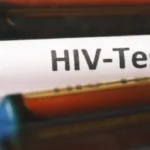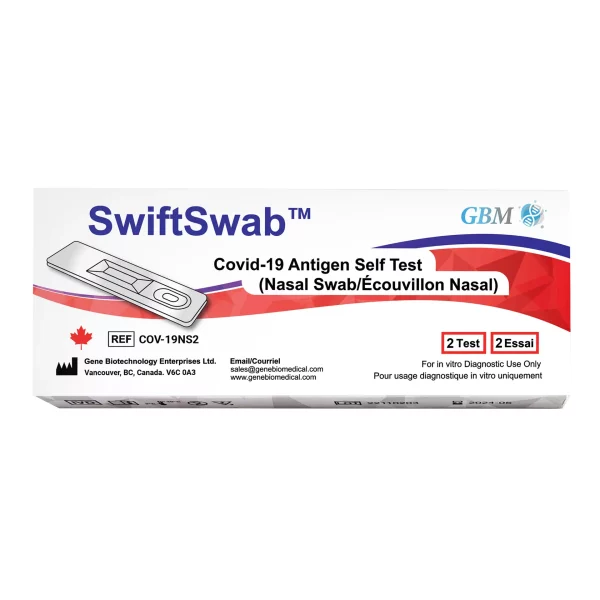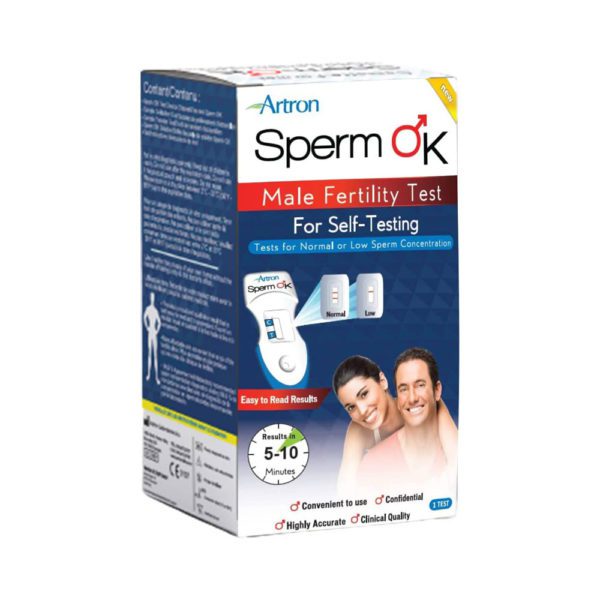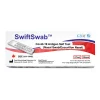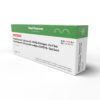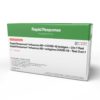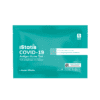When you feel a scratchy sore throat coming on, don’t chalk it up to just another cold. It may be another kind of infection.
Here is everything you need to know whether you have a common cold or strep throat.
What are the symptoms of strep throat?
Strep throat is a bacterial infection caused by Streptococcus pyogenes. It comes with several distinct and uncomfortable symptoms that can significantly impact your daily life. Here’s what to watch out for:
- Sore throat. This is often the first and most obvious symptom that starts suddenly and intensely.
- Difficulty swallowing. The inflammation in your throat makes swallowing, even liquids, painful. With strep throat, eating and drinking can be an uncomfortable experience.
- Fever over 101°F (38.3°C). A high fever often accompanies strep throat as your body fights the bacterial infection. This fever is usually higher than what you would experience with a common cold.
- Swollen lymph nodes in the neck. The glands in your neck may become tender and swollen. These lymph nodes are part of your immune system, which signals that your body is responding to the infection.
- Red and swollen throat. Your throat may look red and inflamed, sometimes with tiny red spots, white patches or streaks of pus on the roof of your mouth.
- Headache. A persistent headache can accompany the other symptoms.
- Stomach pain. This symptom is more common in children but can occur in anyone.
- Nausea or vomiting. These symptoms are also more likely to affect children.
How do strep symptoms differ from common cold symptoms?
If you feel that scratchy pain in your throat, here’s how you can differentiate whether it’s strep or a common cold.
- Sore throat is more severe in strep. People with strep throat usually have a severely painful and sudden sore throat. In contrast, the common cold causes milder throat discomfort that gradually develops.
- Cough is common in colds but rare in strep. A cough is a typical symptom of the common cold but is rare in strep throat.
- Fever is higher and more common in strep. Fevers with strep throat are generally higher and more frequent. In contrast, cold-related fevers are mild or often absent altogether.
- Nasal symptoms are a hallmark of colds. Stuffy or runny noses are common with colds but rarely accompany strep throat. If you have congestion, it’s more likely to be a cold than strep.
Here is a table to easily differentiate the symptoms.
| Symptom | Strep throat | Common colds |
| Sore throat | Severe | Mild |
| Cough | Not associated with strep | Common cold symptom |
| Fever | High fever | Mild or absent |
| Nasal symptoms | Not associated with strep | Common cold symptom |
How quickly do strep symptoms appear after exposure?
Strep throat symptoms develop within 2 to 5 days after being exposed to the Streptococcus pyogenes bacteria.
This rapid onset is important for early detection and treatment, which can help prevent the spread of the infection to others and reduce the risk of complications.
What should you do if you suspect you have strep throat?
If you think you might have strep throat, here’s what you should do for your health and the well-being of those around you:
- Consult your healthcare provider. They can confirm and accurately diagnose if you have strep throat so you can receive the right treatment as soon as possible.
- Avoid close contact with others to prevent the spread. Until you’re cleared by a healthcare professional, keep your distance from others to minimize the risk of passing on the infection.
- Follow prescribed treatment. If you’re diagnosed with strep throat, follow the full course of antibiotics as prescribed. This not only speeds up your recovery but also prevents complications and helps stop the spread of bacteria.
How is strep throat diagnosed?
Strep throat can be diagnosed using two main methods, each with its advantages:
- Rapid antigen test. This test is fast and can deliver results in minutes. It detects the presence of strep bacteria quickly, so you’ll know your infection status immediately. This can also help healthcare providers make faster treatment decisions.
- Throat culture. For a more definitive diagnosis, a throat culture may be performed. This involves taking a throat swab and sending it to a lab to see if strep bacteria grow from the sample. While this method is highly accurate, it usually takes 24 to 48 hours to get results.
What are potential complications of untreated strep throat?
Untreated strep throat can lead to several serious health issues, including the following:
- Rheumatic fever
- Post-streptococcal glomerulonephritis (Kidney inflammation)
- Peritonsillar abscess (abscess near the tonsils) that may require surgical drainage
- Spread of infection to other areas of the body
How can you prevent strep throat?
Here are simple ways to prevent strep throat.
- Practice good hygiene, especially handwashing.
- Avoid close contact with infected individuals.
- Cover your mouth when you cough or sneeze.
Frequently asked questions
What are common symptoms of strep throat?
Common symptoms include sore throat, difficulty swallowing, fever, red and swollen tonsils, sometimes with white patches or streaks of pus, tiny red spots on the area at the back of the roof of the mouth, and swollen, tender lymph nodes in the neck.
Can strep throat manifest without a fever?
Yes, it’s also possible to have strep throat without a fever. Instead, you may experience other primary symptoms such as a severe sore throat, difficulty swallowing, and swollen lymph nodes. In other cases, you may have the infection but not feel symptoms at all.
Is a headache a symptom of strep throat?
Yes, a headache is a symptom of strep throat. Individuals suffering from strep throat may also experience nausea or vomiting, especially in children, alongside the more common symptoms of sore throat and fever.
How can one differentiate between strep throat and a common cold?
Strep throat is characterized by sudden severe sore throat, pain when swallowing, fever, and swollen lymph nodes, without cough or runny nose, which are common in a cold. A rapid strep test or throat culture can confirm the diagnosis.
Key takeaway
Strep throat is a serious bacterial infection that presents with sudden and intense symptoms like a severe sore throat, high fever, difficulty swallowing, and swollen lymph nodes, without the typical cough or nasal congestion seen in colds.
With a rapid test, find out quickly if you have strep throat so you can receive timely treatment and prevent the spreading of the infection to others. Available now on our website.


